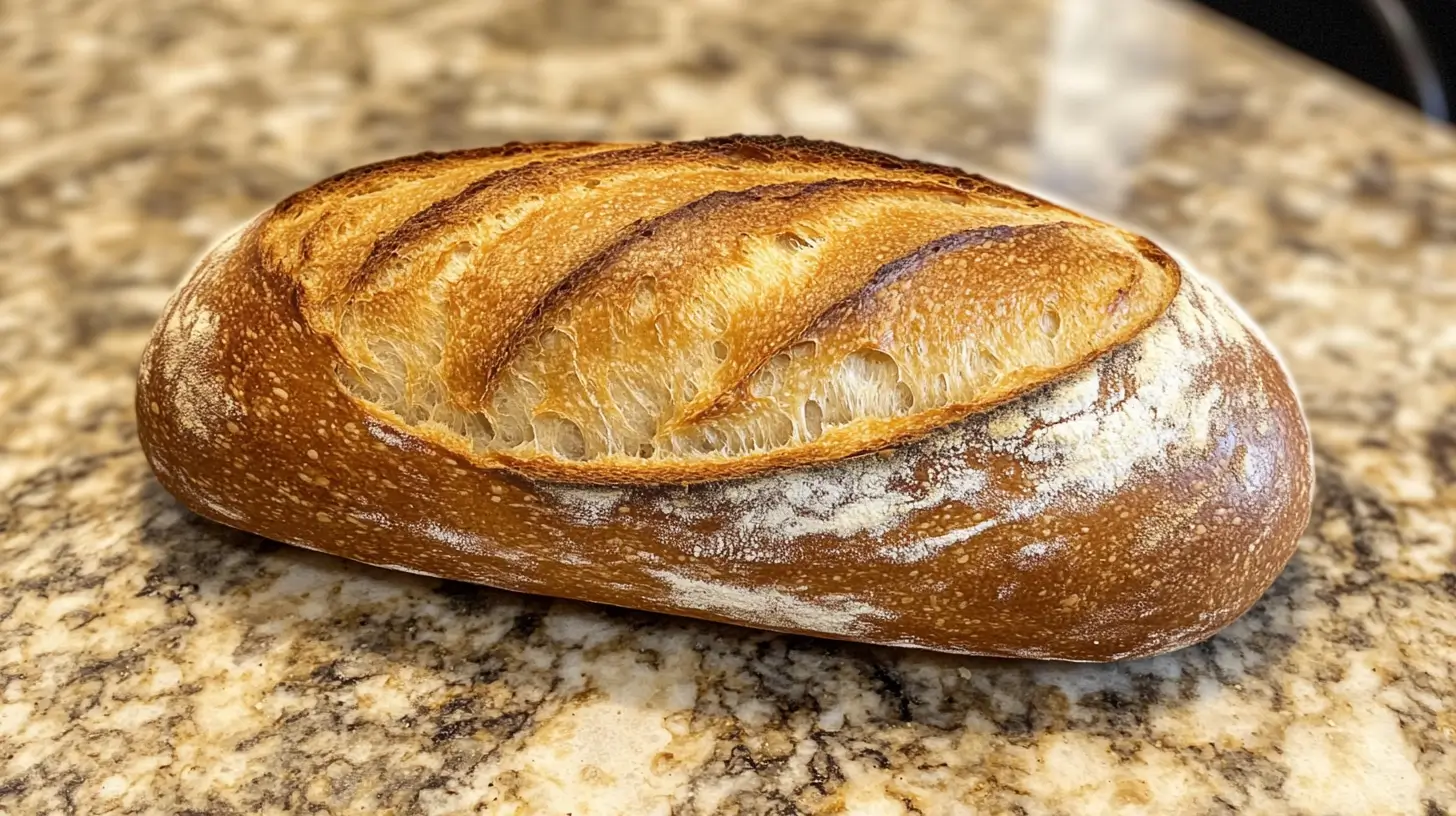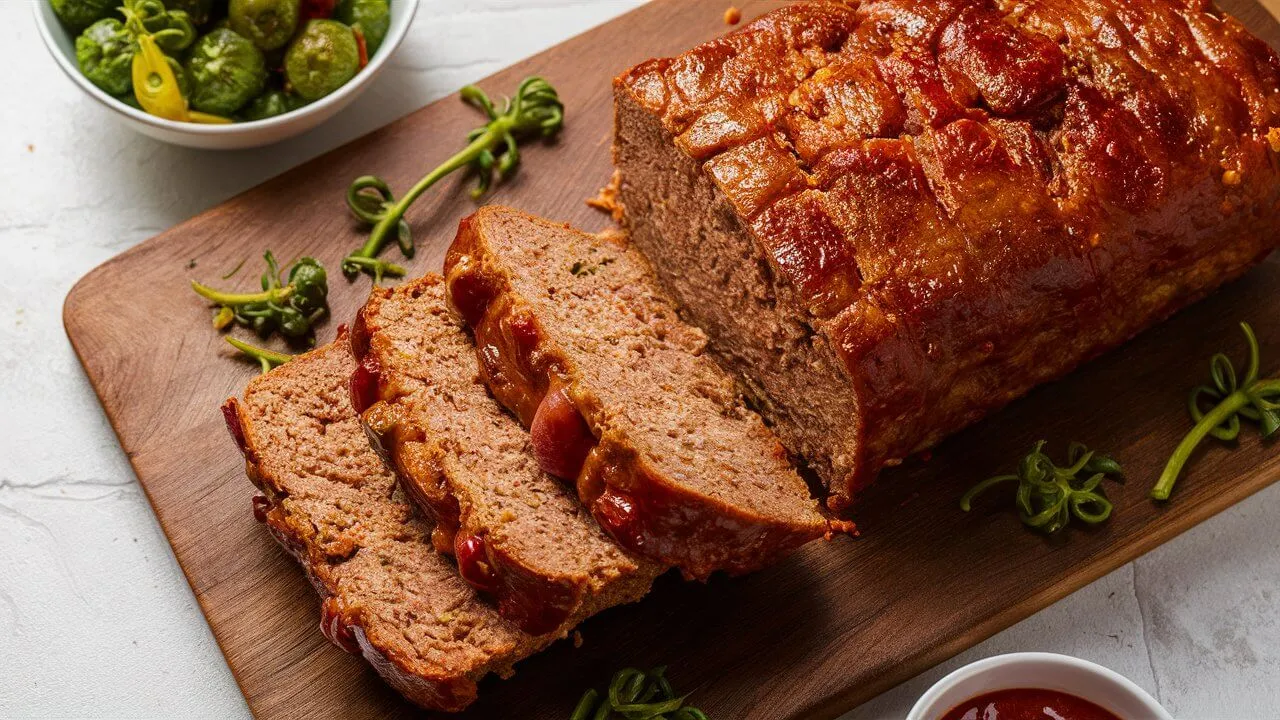Sourdough sandwich bread has been cherished for centuries, known for its rich flavor, health benefits, and unique texture. Unlike regular bread, sourdough relies on natural fermentation, creating a distinct taste and superior nutritional profile. This guide delves into the art and science of making sourdough sandwich bread, providing tips, techniques, and recipes to help you bake the perfect loaf at home.
The Basics of Sourdough Sandwich Bread
What is Sourdough?
Sourdough bread is made using a natural leavening process involving wild yeast and lactic acid bacteria. This process not only gives the bread its characteristic tangy flavor but also enhances its digestibility and nutritional value.
Key Ingredients
The essential ingredients for sourdough sandwich bread include flour, water, salt, and a sourdough starter. The starter, a mixture of flour and water fermented by wild yeast and bacteria, is the cornerstone of sourdough baking.
The Science Behind Sourdough
Fermentation Process
Fermentation is the heart of sourdough baking. The wild yeast in the starter ferments the sugars in the flour, producing carbon dioxide and alcohol, which cause the dough to rise. Meanwhile, lactic acid bacteria produce acids that give sourdough its unique flavor and improve its shelf life.
Health Benefits
Sourdough bread is easier to digest compared to conventional bread. The fermentation process breaks down gluten and other complex proteins, making it suitable for some people with gluten sensitivities. Additionally, sourdough has a lower glycemic index, which helps in maintaining stable blood sugar levels.
How to Make Sourdough Sandwich Bread
Step-by-Step Guide
- Preparing the Starter: Mix equal parts of flour and water in a jar. Let it rest at room temperature for about 24 hours. Repeat the process for about a week until the mixture bubbles and doubles in size within a few hours.
- Mixing the Dough: Combine your active starter with flour, water, and salt. Mix until all ingredients are well incorporated.
- Autolyse: Let the dough rest for about 30 minutes. This allows the flour to hydrate fully and begin gluten development.
- Kneading and Stretching: Gently knead the dough or perform a series of stretch and folds over a period of 2-3 hours. This strengthens the dough and helps develop the gluten network.
- Bulk Fermentation: Allow the dough to ferment at room temperature for 4-6 hours or until it has doubled in size.
- Shaping: Shape the dough into a loaf. put it in a greased loaf pan, seam side down.
- Proofing: Let the shaped dough proof for 1-2 hours at room temperature or overnight in the refrigerator.
- Baking: Preheat your oven to 450°F (230°C). Bake the loaf for about 30-40 minutes, or until it has a deep golden-brown crust.
- Cooling: Allow the bread to cool completely before slicing. This ensures the crumb sets properly and enhances the flavor.
Tips for Perfect Sourdough Sandwich Bread
Hydration Level
Adjusting the hydration level of your dough can significantly impact the texture of your bread. A higher hydration level leads to a more open crumb, while lower hydration results in a denser loaf suitable for sandwiches.
Flour Types
Experimenting with different types of flour can yield varied results. Whole grain flours add a nutty flavor and increase the nutritional content, while bread flour can give your loaf more structure and chewiness.
Temperature Control
Maintaining the right temperature during fermentation and proofing is crucial. A cooler environment slows down the fermentation process, leading to a more complex flavor profile, while a warmer environment speeds it up.
Sourdough Sandwich Bread Variations
Adding Seeds and Grains
Incorporating seeds and grains into your dough can add texture and flavor. Try adding sunflower seeds, flaxseeds, or rolled oats for a hearty, nutritious loaf.
Flavored Sourdough
For a unique twist, consider adding herbs, spices, or even cheese to your dough. Garlic, rosemary, and cheddar are popular additions that can enhance the flavor of your bread.
Storing and Freezing Sourdough Bread
Proper Storage
Store your sourdough sandwich bread in a paper bag or bread box to maintain its crust. Do not use plastic bags, because they can make the crust soggy.
Freezing Tips
To freeze sourdough bread, slice the loaf and wrap the slices individually in plastic wrap. Place them in a freezer-safe bag. This allows you to defrost only what you need, keeping the rest fresh.
Common Issues and Troubleshooting
Dense Bread
If your bread turns out dense, it might be due to under-proofing or insufficient kneading. Ensure your dough has doubled in size during the bulk fermentation stage and that you’ve developed enough gluten.
Overly Tangy Bread
An overly tangy flavor can result from over-fermentation. To balance the tanginess, reduce the fermentation time or refresh your starter more frequently.
Sourdough Sandwich Bread Recipe
Creating a sourdough sandwich bread recipe involves understanding the balance between ingredients and fermentation time. Start by combining your active starter with high-quality flour and water. Allow the mixture to rest, promoting gluten development and hydration. This step, known as autolyse, is crucial for achieving a soft crumb. Incorporate salt, then knead the dough until smooth and elastic. After a bulk fermentation period, shape the dough and place it in a loaf pan. The final proofing ensures the bread rises perfectly. Bake at a high temperature to achieve a crispy crust and a soft interior, perfect for any sandwich.
Sourdough Discard Sandwich Bread
Utilizing sourdough discard for making sandwich bread is an excellent way to reduce waste while creating delicious bread. The discard, though less potent than a fully active starter, can still leaven the dough effectively. Combine the discard with flour, water, and a small amount of commercial yeast if needed, to ensure a good rise. Follow the typical bread-making steps: mix, autolyse, knead, bulk ferment, shape, and proof. The result is a flavorful, slightly tangy loaf that makes the perfect base for any sandwich, showcasing the unique taste of sourdough even in its discarded form.
Sandwich Sourdough Bread Recipe
A well-crafted sandwich sourdough bread recipe focuses on achieving the right texture and flavor for holding sandwich fillings. Begin by preparing a strong starter and mixing it with flour and water. After an autolyse period, add salt and knead until the dough is smooth. Allow the dough to bulk ferment until it doubles in size, then shape it into a loaf. Place the shaped dough in a loaf pan for its final proof. Bake until the crust is golden and the interior is soft yet structured. This bread’s robust structure and tangy flavor make it ideal for a variety of sandwiches, from classic ham and cheese to gourmet creations.
Farmhouse on Boone Sourdough Sandwich Bread
The Farmhouse on Boone sourdough sandwich bread recipe has gained popularity for its simplicity and delicious results. This recipe begins with a well-maintained starter, combined with flour and water. After the initial mix, the dough undergoes an autolyse period to develop gluten. Salt is added, and the dough is kneaded until becomes smooth. Following a bulk fermentation, the dough is shaped and placed in a loaf pan for the final proof. The bread is baked at a high temperature, resulting in a beautiful crust and a soft, airy crumb. The Farmhouse on Boone approach ensures a reliable, tasty loaf every time.
Conclusion
Sourdough sandwich bread is a delightful addition to any home baker’s repertoire. Its rich flavor, health benefits, and versatile uses make it a favorite choice for many. By following the tips and techniques outlined in this guide, you can master the art of sourdough baking and enjoy delicious homemade bread every day.
Frequently Asked Questions
Is Sourdough Bread Good for Sandwiches?
Absolutely, sourdough bread is fantastic for sandwiches. Its sturdy, chewy texture provides an excellent base that holds up well to various fillings without becoming soggy. The tangy flavor of sourdough complements a wide range of ingredients, from savory meats and cheeses to fresh vegetables and spreads. Moreover, the natural fermentation process creates a dense but tender crumb, making it an ideal choice for hearty sandwiches. Whether you’re making a simple turkey and cheese or an elaborate club sandwich, sourdough adds a delicious twist that enhances the overall taste experience.
Is Sourdough Bread Actually Healthier?
Yes, sourdough bread is often considered healthier than regular bread. The fermentation process lead to a break down to gluten and other proteins, making it easier to digest. It also helps in breaking down phytic acid, which can inhibit the absorption of minerals. As a result, sourdough bread has a lower glycemic index, which means it causes a slower rise in blood sugar levels, making it a better option for people managing their blood sugar. Sourdough bread also contains beneficial bacteria that may improve gut health. Its rich, complex flavor and nutritional benefits make it a superior choice.
How Do You Roll Sourdough for Sandwich Bread?
Rolling sourdough for sandwich bread involves a few simple steps to ensure a uniform loaf. After the fermentation, turn the dough out onto a floured surface. Shape it into a rectangle by gently pressing and stretching the dough. Starting from one of the shorter edges, roll the dough tightly, ensuring there are no air pockets. Tuck the ends under to create a smooth surface and place the rolled dough seam-side down in a greased loaf pan. Let it proof until it has risen significantly before baking. This method creates a well-structured loaf ideal for slicing and making sandwiches.
What Tastes Good with Sourdough Bread?
Sourdough bread pairs wonderfully with a variety of toppings and fillings. For breakfast, it can be enjoyed with butter and jam or avocado and a sprinkle of salt. For a savory option, try it with smoked salmon and cream cheese, or a hearty stew. Sourdough’s tangy flavor also complements sweet spreads like honey or Nutella. Cheese, particularly sharp cheddar or brie, works well with sourdough, making it a versatile choice for cheese platters or grilled cheese sandwiches.
What is the Perfect Way to Eat Sourdough Bread?
Sourdough bread can be enjoyed in numerous ways, each bringing out its unique flavor and texture. Toasting sourdough enhances its crusty exterior while maintaining a chewy interior, making it perfect for breakfast with a simple spread of butter. For a more filling meal, use sourdough to make sandwiches loaded with your favorite ingredients. It also serves as an excellent accompaniment to soups and stews, where its sturdy structure holds up well when dipped. Alternatively, enjoy it fresh from the oven with a drizzle of olive oil and a pinch of sea salt for a delightful snack.









